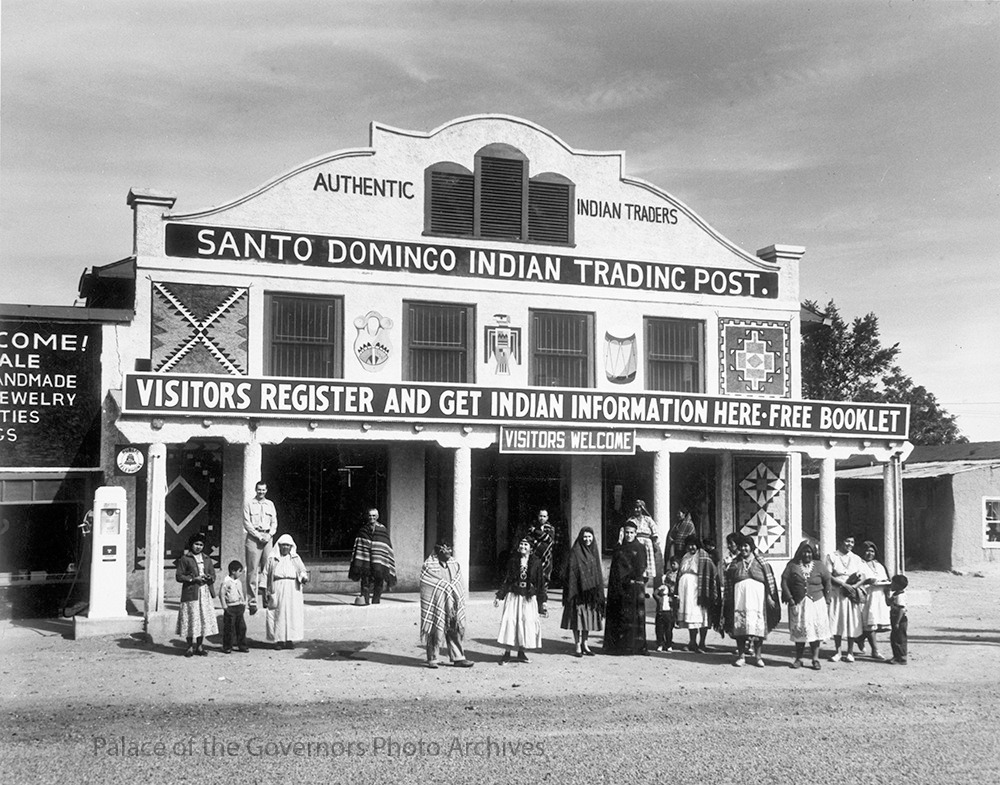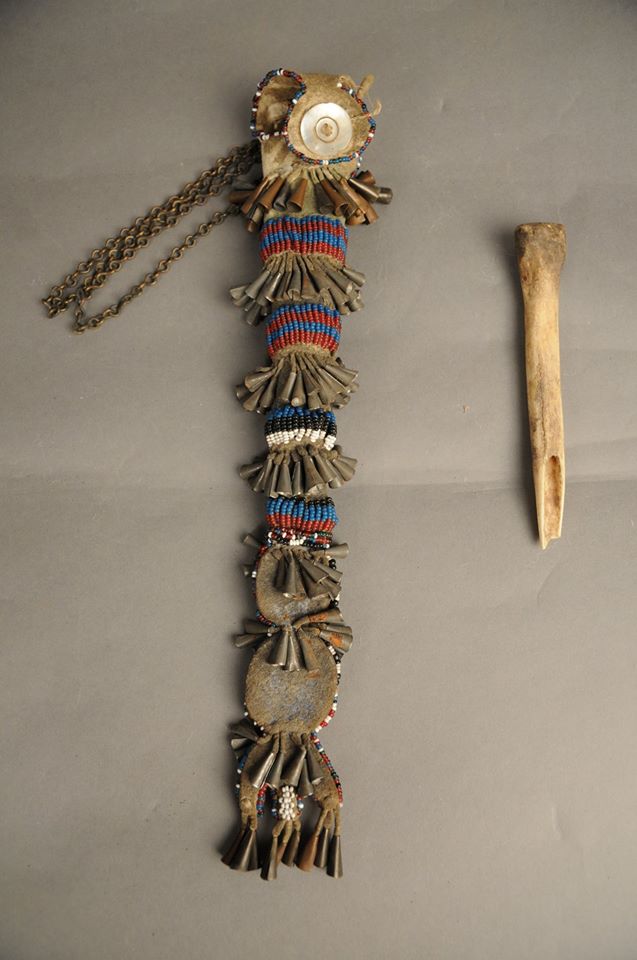
Santo Domingo Indian Trading Post, Santo Domingo Pueblo, New Mexico
Creator: New Mexico Department of Tourism
Date: 1954?
Negative Number 059349
Kewa Women’s Co-op, Santo Domingo Pueblo
According to oral and recorded history, the Santo Domingo people have always made and traded jewelry. From prehistoric times heishi, drilled and ground shell beads, have been strung into necklaces. Generations of Santo Domingo women have passed down this art. Recent descendants have formed the Kewa Women’s Co-op to retain heishi and other traditions including pottery, embroidery, weaving, and Pueblo foods.
Roadside Marker Location: Pueblo of Santo Domingo; Sandoval County, US Hwy 22
You can view a county by county list of the Historic Women Mile Markers in this pdf.
You can view a map of the Historic Women Mile Markers at www.nmhistoricwomen.org
March is Women’s History Month. During this month we’ll be highlighting some of the women featured on New Mexico’s Historic Women Roadside Markers. Text provided by our colleagues at New Mexico Historic Preservation Division

